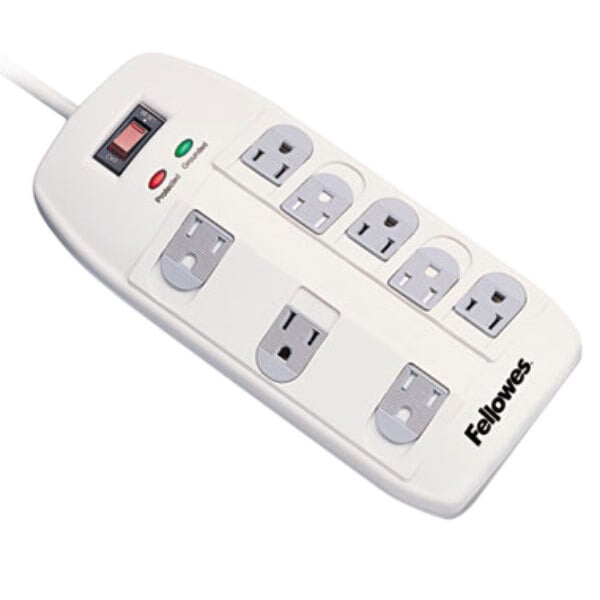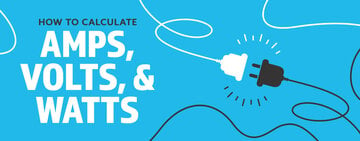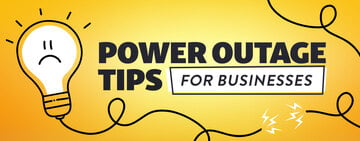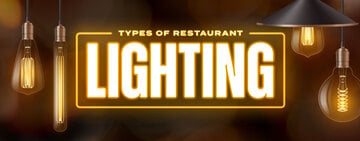Surge Protectors vs. Power Strips: Which Option is Right for You?
If you are in the market for additional electrical sockets, there is a chance that you’ll see both surge protectors and power strips available online or in the store. Have you ever wondered what the difference is between a power strip and a surge protector? Have you ever questioned how to tell the difference? Below, we explain the difference between power strips and surge protectors, and we provide a quick guide to help you figure out what you need.
What Is the Difference Between a Surge Protector and a Power Strip?
The difference between a power strip and a surge protector is that a power strip adds extra outlet space while a surge protector defends against possible voltage spikes that could damage your electronics, appliances, or equipment.
Although they look similar, you may be able to see the variance in the power strip and the surge protector when you come across a joules rating on the packaging. Only surge protectors will have this rating. Joules are a unit of measurement for energy (like watts or calories). They measure how long your appliances will be protected. Sometimes, it may only take one massive surge in power to exceed the number of joules that your equipment is protected against, but sometimes, it could take ten or fifteen little surges to do this.
Keep in mind that the number of joules your power strip protects against works somewhat like a reservoir. When you initially purchase your surge protector, you may see a label of 2,000 joules, but this will deplete over time. As your surge protector takes hits from the power spikes, the level of protection will diminish, either in one massive strike or over time.
So, how can you tell a surge protector and a power strip apart? The simple answer is you can’t always tell. Some surge protectors have a light that comes on to tell you when its reservoir is low; other surge protectors have a simple alarm system to make you aware that it's time to purchase a new unit.
Why Choose a Power Strip?

Power strips are great if you have multiple electronics within a close proximity to one another. Most outlets in residential and commercial areas only include two sockets, which is not always sufficient, so having the extra strip is really convenient. Power strips usually have several outlets, a circuit breaker, and some sort of on/off switch, which is great for businesses or restaurants looking to conserve power.
While some power strips have a built-in surge protector, not all of them do, leaving your electronics vulnerable to a surge in electrical power.
Power strips are relatively affordable price-wise. You can usually acquire one for less than $20, and some are even available for under $10. So if you’re looking for just a few extra electrical sockets, this is probably the option for you.
Why Choose a Surge Protector?

Like power strips, surge protectors are ideal for when you have numerous electronics within the vicinity. With multiple electrical outlets, a surge protector can house the cords for your phone, computer, or TV, allowing them all to charge while simultaneously protecting them from a voltage surge. This protection is measured in joules.
Surge protectors are also modest in price, so if you are looking for a way to protect your television, computer, and home entertainment system, these are great options. You can usually find these for under $20, but more expensive options offer protection up to a higher amount of joules.
If you are a large operation that has major appliances like refrigerators and AC units or computers and servers, you may need to look into commercial surge protectors, unless you are connected to a UPS (uninterrupted power supply). Commercial power surge protectors can be a little pricier, but keep in mind that the surge protector is less expensive than replacing the items that would be damaged in a power spike. Some surge protectors are even available with a warranty.
What is an Electrical Power Surge?
An electrical power surge is a spike in your building’s electrical current that usually lasts less than a second. Although a voltage surge is brief, it can cause damage to both your electronics and your appliances. In extreme cases, a power surge can even cause a fire.
These spikes in power can occur for a few reasons.
- When you have faulty wiring that cannot withstand the electrical power of a voltage surge, you are more susceptible to them.
- When the motor of a high-powered device like an AC unit or a refrigerator turns on or off, you may be subjected to a fluctuation in power.
- A lightning strike can cause a severe voltage surge, which can burn out TVs, computers, etc.
Faulty Wiring
High-Powered Devices Turning On or Off
Lightning Strike
As a result of being well-versed on the difference between a surge protector and a power strip, you can make a more informed decision, while also taking the best care of all of your electrical devices. Whether you are in the market for just a few more electrical outlets or you’re searching for protection for your bigger ticket items, you now know what to look for to make sure that you are getting the most for your money.



